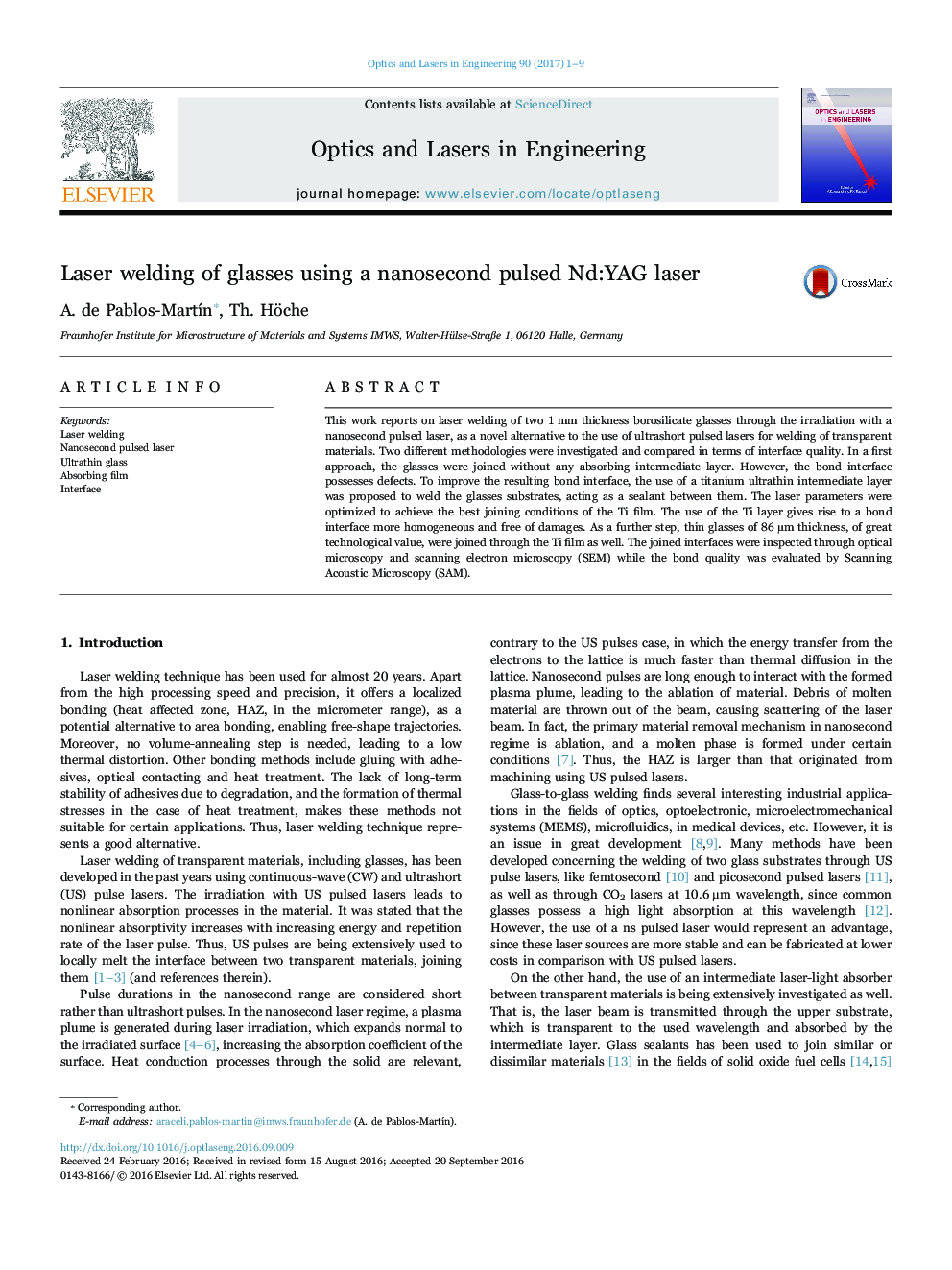| Article ID | Journal | Published Year | Pages | File Type |
|---|---|---|---|---|
| 5007897 | Optics and Lasers in Engineering | 2017 | 9 Pages |
Abstract
This work reports on laser welding of two 1 mm thickness borosilicate glasses through the irradiation with a nanosecond pulsed laser, as a novel alternative to the use of ultrashort pulsed lasers for welding of transparent materials. Two different methodologies were investigated and compared in terms of interface quality. In a first approach, the glasses were joined without any absorbing intermediate layer. However, the bond interface possesses defects. To improve the resulting bond interface, the use of a titanium ultrathin intermediate layer was proposed to weld the glasses substrates, acting as a sealant between them. The laser parameters were optimized to achieve the best joining conditions of the Ti film. The use of the Ti layer gives rise to a bond interface more homogeneous and free of damages. As a further step, thin glasses of 86 µm thickness, of great technological value, were joined through the Ti film as well. The joined interfaces were inspected through optical microscopy and scanning electron microscopy (SEM) while the bond quality was evaluated by Scanning Acoustic Microscopy (SAM).
Related Topics
Physical Sciences and Engineering
Engineering
Electrical and Electronic Engineering
Authors
A. de Pablos-MartÃn, Th. Höche,
